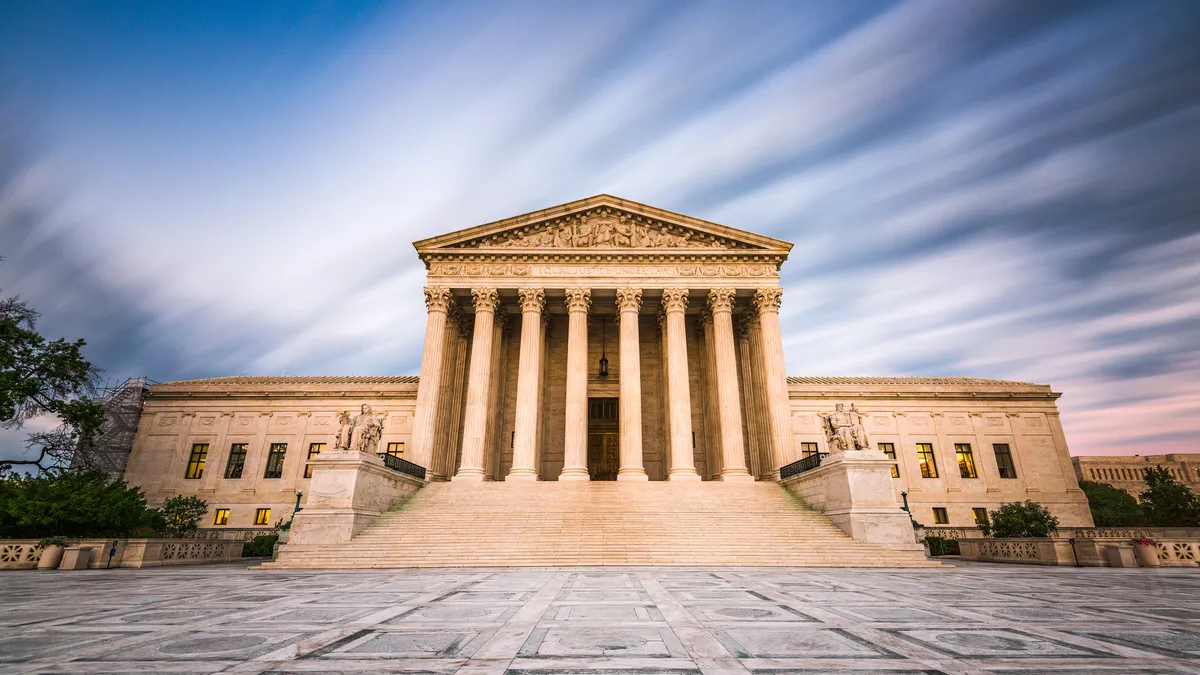Jeff Weimer is a partner at the law firm Reed Smith who leads its higher education team. Cori Smith is a Reed Smith associate and higher education specialist.

In October, the Supreme Court heard oral arguments in the lawsuits challenging the University of North Carolina at Chapel Hill's and Harvard University’s use of race as a factor in admissions. Even before a decision is issued, these oral arguments provide insight into steps that universities may take toward the goal of attaining a diverse learning environment — even if the consideration of race in admissions no longer survives constitutional scrutiny.
The justices focused intently during the oral arguments on how institutions assess whether they are attaining their campus diversity goals. In particular, the justices seemed to narrow in on a question: Can universities present plans for actively moving away from considering race as a factor in admissions?

This line of questioning suggests that, whether or not the Supreme Court upholds the consideration of race as a factor in admissions, universities that aim to provide diverse educational environments will need to revisit their diversity metrics and goals.
Two sources may be particularly instructive in revisiting how colleges approach diversity in education: metrics described by U.S. Solicitor General Elizabeth Prelogar during the oral arguments and practices of companies in the employment affirmative action context, where it is generally unconstitutional to consider the race of a job candidate.
Prelogar, intervening on behalf of the U.S. supporting the universities, suggested that universities should assess whether they’re attaining their diversity goals using the following metrics:
- Graduation and attrition rates.
- Race-related on-campus incidents.
- Demographic patterns of class enrollment.
- Disparities in on-campus demographics (not to create a quota, but to identify areas of underrepresentation as compared to the population of qualified applicants).
- Subjective or qualitative measures of student experience that could identify whether students from underrepresented groups are facing barriers to accessing educational opportunities.
Prelogar explained that, in order to assess whether students are presented with a “meaningful opportunity” to receive the educational benefits of campus diversity, an institution should assess whether the above-mentioned metrics align with the institution’s stated educational goals. This argument did not receive pushback from the justices.
As for immediate next steps institutions might take — even before a Supreme Court ruling — an institution can evaluate which metrics Prelogar proposed relate to the institution’s stated diversity goals as part of its educational mission; identify the data that would need to be collected in order to implement the selected metrics; and begin the on-campus vetting and approval processes necessary to adopt written procedures to regularly assess the selected metrics in a manner that ties back to the institution’s stated diversity goals.
If implemented, the regular assessment of these metrics would allow an institution to represent to its community, the public and — if necessary — a court that it is routinely evaluating progress toward its diversity objectives. Schools might point to any observed shortfalls on particular metrics as evidence of a need for further consideration of race to achieve a diversity goal, without unwaveringly and indefinitely relying on race as a factor.
While the Supreme Court does not allow affirmative action programs developed as remedial measures to address harms of past discrimination in higher education, employment concepts nonetheless provide a helpful blueprint through which colleges and universities may revisit their campus diversity goals. Executive Order 11246, originally signed by President Lyndon B. Johnson in 1965, and amended over the years, encourages federal contractors to develop recruiting and placement goals, instead of inflexible quotas or set-asides for achieving diversity.
Employers set aspirational recruiting goals as part of their diversity, equity and inclusion efforts. These goals are rooted in data, and not intended to be quotas or to supersede merit selection. Similar aspirational recruiting goals in higher education would shed a light on the difference between the demographic makeup of the current student body and the makeup of the pool of qualified applicants.
Placement goals may be similar to the diversity goals in an educational mission — they set forth aspirations to, over time, build a workforce that mirrors the demographics of the qualified applicant pool across all characteristics, including race. In a campus environment, recruiting and placement goals may take the form of admissions plans formed specifically in reference to data analysis of qualified prospective students.
For example, if the representation of a specific demographic in the qualified applicant pool is markedly different from its representation in the student population, institutions may create a plan to focus recruiting efforts on high schools or communities in which large numbers of students in that demographic reside.
Selective institutions have some power to shape their applicant pools with recruiting efforts. These plans should specifically reference the institution’s diversity goals as part of the educational mission and build in a timeline for phasing out these special recruiting efforts as the representation of the demographic on campus more closely mirrors that of its representation in the qualified applicant pool.
Although these plans are less effective than race-conscious admissions practices, they may be the best option for some schools in the face of the Supreme Court’s likely prohibition of considering race as a factor in admissions.
While colleges and universities will need to wait until the Supreme Court issues an opinion in the UNC and Harvard cases to revisit their consideration of race in admissions, they need not wait until then to ensure that their current policies for striving toward and attaining campus diversity would survive the scrutiny of a conservative majority.













